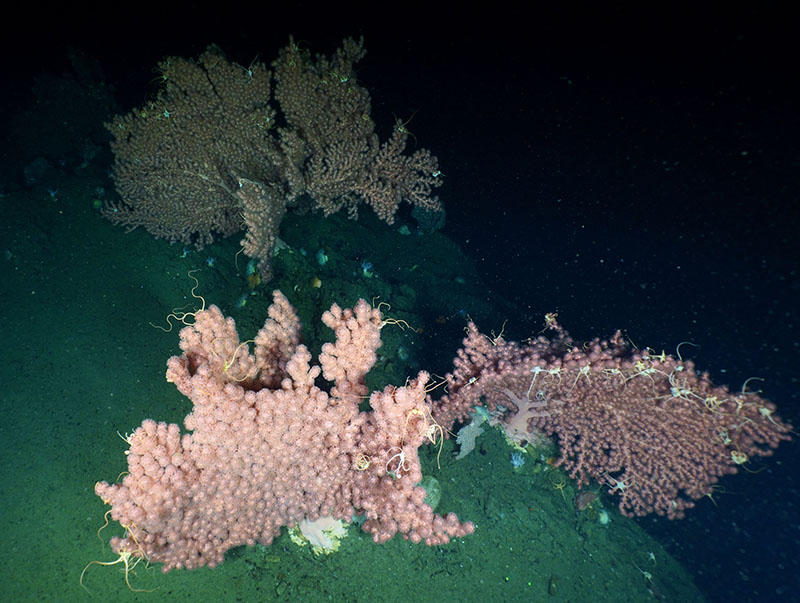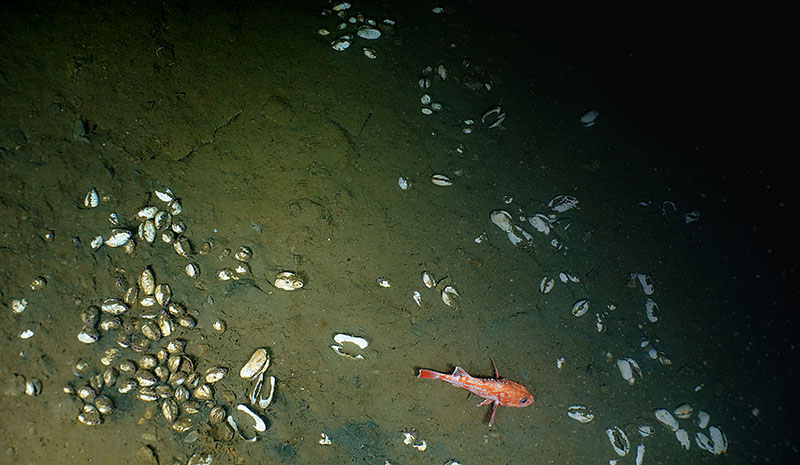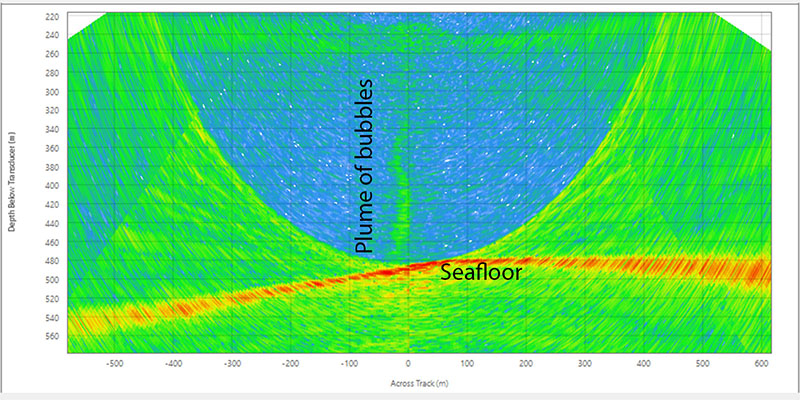
By Lila Ardor Bellucci, Graduate Student, Oregon State University
September 25, 2020
Despite all the planning that goes into making the most of an exploratory dive, some of the best discoveries are unexpected and only made possible by collaboration. For this expedition on Exploration Vessel Nautilus, our team from Oregon State University (OSU) is sharing the ship with a team from Olympic Coast National Marine Sanctuary (OCNMS) who are exploring coral and sponge communities in “Essential Fish Habitat” areas off the Washington coast. During their last dive, they quickly found the large glass sponges and cold-water corals they had been hoping for, but none of us had any idea what lay just beyond.
A mere five minutes after gawking at huge meter-wide pink bubblegum corals, the lights of remotely operated vehicle (ROV) Hercules began glinting off bright white clam shells and knotty bushes of tube worms. We knew this could only mean one thing... methane seeps.
Although we had been diving on nearby seeps just one day before, we had not been expecting them here. The OSU seep team had been watching with rapt attention on screens downstairs, mesmerized by the exhilarating coral imagery, and quickly ran up to the control van to take advantage of this exciting find.

The main focus of the dive was looking for sponges and corals such as this Paragorgia. Image courtesy of Oregon State University, Ocean Exploration Trust, NOAA OCNMS, and NOAA Office of Ocean Exploration and Research. Download larger version (jpg, 6.8 MB).
It may seem sometimes like the ocean floor is vast and muddy, with different habitats that occur but don’t interact, but this dive reminded us that this is not the case. Habitats which may seem separate, like methane seeps and coral communities, can occur together. Although it had not been the mission of the dive, we were able to collect valuable imagery of the seeps and multiple sediment push cores (a fancy term for plastic tubes of mud). These unexpected samples will allow us to learn more about seep habitats and the other animals and ocean conditions that are associated with them.

This aggregation of clams is fueled by the release of methane from the seafloor. It provides a great example of how widespread methane seeps are along the Washington Margin. Image courtesy of Oregon State University, Ocean Exploration Trust, NOAA OCNMS, and NOAA Office of Ocean Exploration and Research. Download larger version (jpg, 2.9 MB).
This encounter highlights just how many seeps must be in these waters that we don’t yet know about. We find most seeps using technology (called multibeam sonar) that bounces sound off the rising seep bubbles. It is the same technology we use to map the ocean floor. The seep we found on this dive did not bubble, reminding us that only a fraction of seeps do. How many more are out there that we don’t yet have the technology to find?

Normally we find seeps by sending soundwaves through the water column and watching them bounce off bubbles. Here one can see the plume of bubbles from the seafloor that we used to identify a site for our last seep discovery dive. Image courtesy of Ocean Exploration Trust - NA121. Download larger version (jpg, 883 KB).
This discovery reminds us of the important role that collaboration and teamwork play in scientific exploration and discovery. Each of our ROV dives is led by one of the two teams onboard, and although our interests are different, they are just as interrelated as the fascinating communities we study. Like with many deep-sea discoveries, it is only through collaboration (and a little bit of luck) that we found this seep juxtaposed with stunning cold-water corals, reminding us of the constant potential to discover the unexpected if we just look.